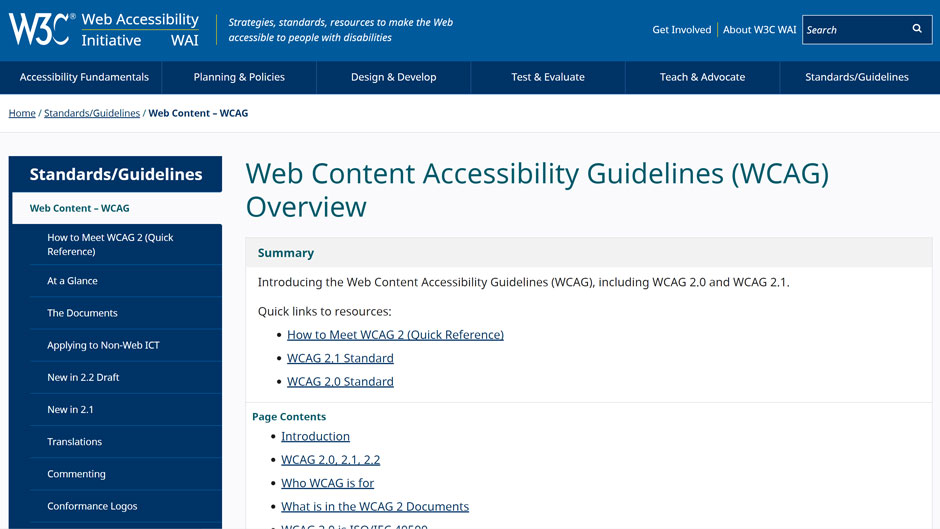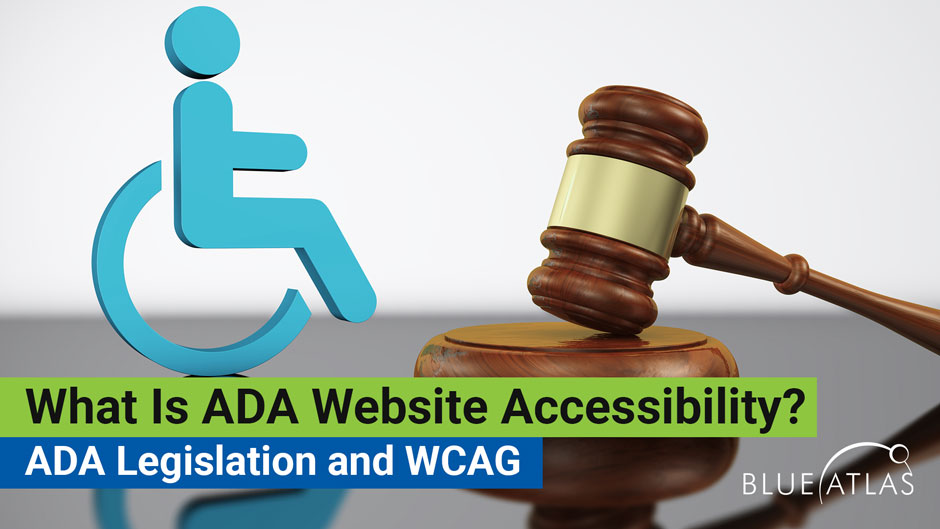What is WCAG 2.1 and Why It Matters On Your Website

How friendly is your website for people with disabilities? This simple question quickly grows more complex as businesses consider how their websites are created, what updates look like, and what accessibility issues they may have if they aren’t sure. Let’s take a closer look at disability guidelines for the internet, and what your organization can do in response.
Understanding WCAG 2.1

WCAG stands for Web Content Accessibility Guidelines. These are standards set by World Wide Web Consortium (W3C) for web development to help improve accessibility for users who may have disabilities, created by the combined efforts of experts around the world. For example, what if a website user has vision issues, and cannot see images or read text? What if the user cannot hear and encounters a video or audio playback on a site? The WCAG provides specific options for developing a website in a way that makes the site accessible for everyone, with different levels of compliance based on how accessible the site should be.

Like many standards, the WCAG is periodically updated to incorporate advances and new understanding, something that’s particularly important for developers who want standards for modern websites. WCAG 2.0 added four principles to help govern website accessibility, saying that websites should be:
- Perceivable: This refers to adding alternative options so that communication can be understood for all users – that may mean offer a large text option, an option with simpler language, different layouts, transcripts in addition to audio, alternative themes where colors may cause issues, and so on.
- Operable: Essentially, the site should be fully navigable and usable via a keyboard, to help those who are not able to use a mouse, touchscreen, or other accessories.
- Understandable: The user interface and any tools on the site should be understandable for all users, with alternative wording or communication options for more technical/difficult language.
- Robust: Websites should function with a wide variety of assistive technologies – essentially, website code should be really easy for disability-related technologies to read.
WCAG 2.1 was an important update in 2017-2018 that added important information for mobile optimization and accessibility (what if a user with a disability is using a mobile device instead of a desktop?), plus significant improvements in guidelines for low-vision and cognitive disabilities.
Do You Need to Follow WCAG 2.1?
Around this time, brands tend to ask, “Does our business website need to comply with WCAG 2.1? Are there any penalties for ignoring it? How do I know how well our business site does according to the WCAG, anyway?”
These questions deserve a thorough answering. WCAG requirements for websites can vary a little based on several important factors:
Federal regulations: An amendment of the Rehabilitation Act of 1973 (Section 508) mandates that any federal website, or any website from an organization receiving federal funding, must be accessible for all users (which generally means following WCAG 2.1 AA compliance). This obviously affects many government and nonprofit sites. State laws often mimic these federal laws with accessibility requirements of their own.
Following the ADA (Americans with Disabilities Act): The ADA mandates that businesses must also make their websites as accessible as possible. Now, there’s not really a regulatory body checking for this, but there have been cases where users have sued businesses over websites that they can’t properly use, and courts have ordered businesses to change their websites to become more accessible.
Sales: From a purely sales-oriented perspective, making your website as accessible as possible to a broad audience can help convert more leads.
Industry standards: Certain industry associations may also encourage adoption of accessibility compliance as part of best practices for that industry, directing members to follow the ADA or WCAG 2.1.
Vetting Your Current Website for WCAG 2.1
Brands may not have worked with developers that talked about WCAG, or the business teams may have changed a lot since the website was created – in which case, the brand may not know how compliant their website really is. If that’s the case, we highly suggest contacting Blue Atlas Marketing today for a basic inspection from our web development team.
Blue Atlas offers a service that can fully review a site for web accessibility, with a focus on WCAG 2.1 and ADA compliance. After reviewing the results, we can sit down with a business and create a list for the highest priority changes for the website to reach a healthy level of accessibility. We can discuss any specific concerns or ideas a business has, from development costs and timelines to updating a current website vs. planning out a new site or structure.
Your Website’s Accessibility
You and your team can review the full WCAG 2.1 here. It’s quite comprehensive, with explanations and potential changes for each point and level and compliance. This page lists the proposed new success criteria in the Working Draft of Web Content Accessibility Guidelines (WCAG) 2.2.
If your brand is ready to make accessibility changes, contact Blue Atlas Marketing. We have the web development and ADA compliant services your business needs for important optimization on every device.






